By Tim Zehnder
Photos by author
Grain bin rescue calls are a challenge to firefighters, no matter what the situation. Many think that these types of incidents only happen in the rural setting, but that is not the case. This type of recue has happened in large cities as well as small rural communities. Anywhere there is a grain facility, there is a chance that such an incident can occur. Many factors are involved in an incident such as this: the condition of the grain, the location of the facility, the reasons for a person to be inside, how long the individual has been trapped, the air quality in the bin, access to the entry point, and the type of grain involved. Remember, grain bins are a confined space and should be treated as you would a confined space.
- Grain Bins: A Complex Response Requiring a Complex Solution
- Matt Rose: Grain Bin Rescue
- Construction Concerns: Grain Storage Facilities
Training for this type of an incident covers many disciplines: ropes; confined space operations; patient care and packaging; understanding how a grain bin, silo, or grain elevator operate; safety shut offs and lock out/tagout; air monitoring; grain rescue tubes and removal; and the like.
In general, there are three types of incidents:
- Caught in equipment
- Submerged in grain
- Medical event
Each year about 55 grain bin entrapment events happen around the United States. Many of these events happen in Midwest in states such as Indiana (171), Iowa (168), Illinois (129), Minnesota (128), and Nebraska (103). These numbers represent the total cases that have been reported in each state since records have been kept. Surprisingly, no other states are even close to 100. This makes sense being these are the main states for crop production in the US.
Never did I anticipate doing preplans on grain facilities. The family farm is getting larger, not smaller, and being able to market you own grain is key to get the best price. Farmers need to have storge on farm, so they don’t have storage costs the cut into the bottom line. There are locations that have 750,000 bushels and more of storage on the farm; that is larger than some small-town elevators.

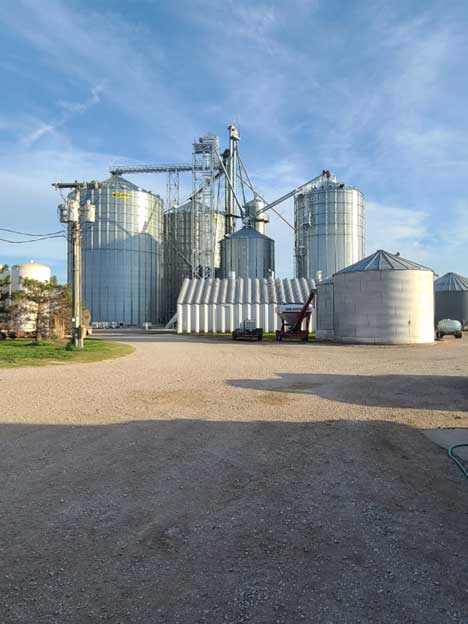
The tones drop, you respond to a family farm with reports of a person trapped in a grain bin. When you arrive on scene you need to ask yourself a few questions:
- Where is the access to the bin?
- What are the number and condition of the patient/patients?
- Will we need mutual aid?
- Will this be a rescue or a recovery?
- How tall is the bin the person is in?
- How much grain is in the bin?
Sizing up an event like this is unlike calls where most things are visible. Doing a 360 walk around the structure will not be much help due to not being able to see inside. When approaching these scenarios, I like to think of in terms of offensive or defensive attack: do we have a rescue situation, or will this be a recovery?
Establish a perimeter and stabilize the scene, the machinery, and the patients. Set your staging area so that not all the vehicles are crowded around the bin. Talk to the family and find out where to lock and tag out the power. If you do not have an aerial apparatus, figure out where can you get one or will you need a crane to get equipment up to the entry point and to get the patient out.
A look out (safety officer) must be placed at the top of the bin to be the eyes for command. This person will relay information back to command and to the teams inside. Ask the following questions:
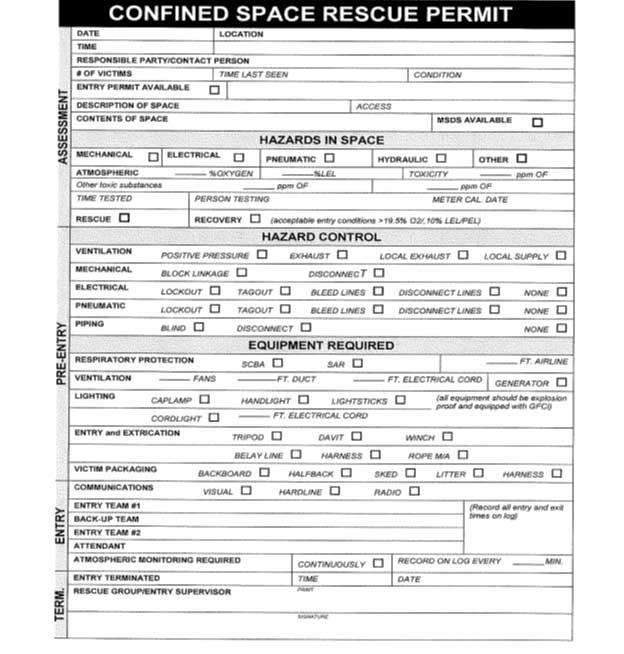
- Why did the person enter the bin?
- What is the air quality in the bin?
- Is the person visible in the bin and what position are they in?
- How long has the patient been in the bin?
Some basic rules of rescue:
- Treat grain bin entry as a confined space.
- Never enter without monitoring the air quality first.
- Wear dust masks or self-contained breathing apparatus, if necessary .
- Never enter a bin with a partially submerged person until a plan is in place.
- Never start unloading equipment—it is possible to suck the person into the unloading auger.
Grain bins are a confined space and should be treated as such. If the farm has 10 employees or fewer, they do not fall under the OSHA rules and regulations.
Have some type of form to fill out while you are operating at grain bin rescue scene (image 3). This will help you keep things organized and helps you not to miss anything.
Air Quality Testing
Monitor from the top down. An air monitor must stay with the rescue team as well. Monitor top down every five minutes.
Accessing the Patient
The majority of entries will be made from the bin edge access door. The top access hole is bigger, but most bins will have a distributor hanging bellow the opening to evenly spread the grain; this would prevent access.
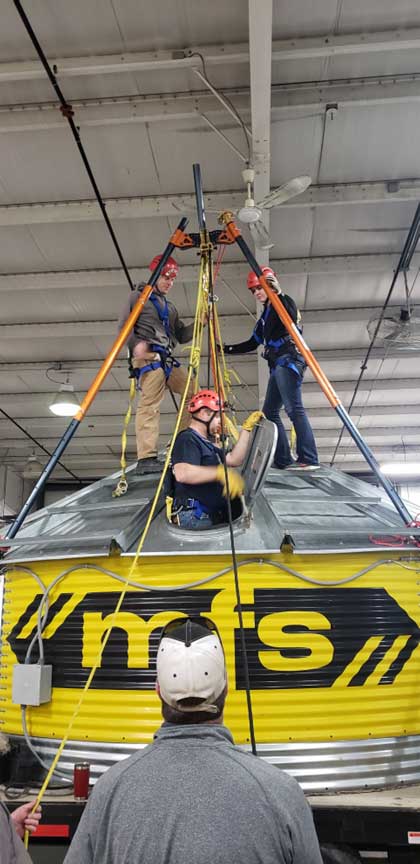
Form a rescue team; you will need an entry team and a rope team. Secure a high-point anchor. This can be an overhead auger, aerial, crane, multipurpose folding ladder, or a quad pod. Remember, getting your equipment to the top of the bin will be a challenge.
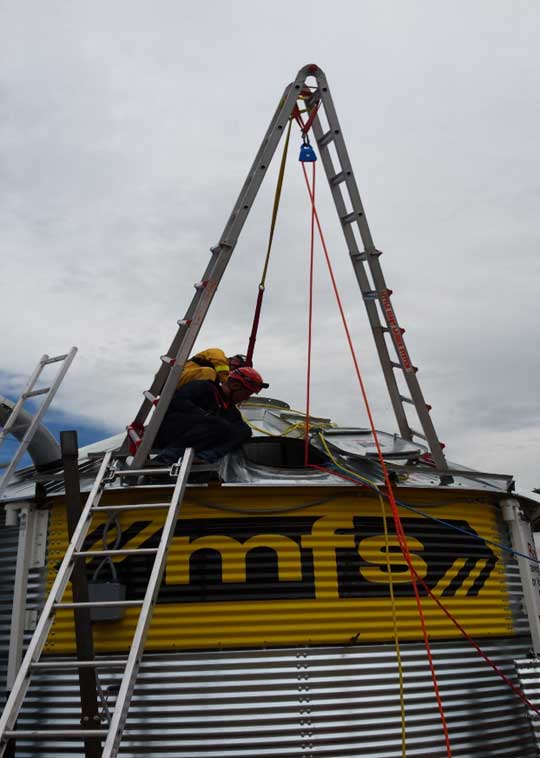
Once the rescue teams are set and a plan is in place, the team can enter with safety lines attached and while monitored outside of the bin. Rescuers can start assessing the patient, administer any EMS needs, get a rope or a grab strap around the patient to prevent the individual from going any deeper ,and request equipment that they will need to have a successful rescue.
The rope team will need to get the safety lines on the rescuers, rig the haul line, and make sure to coordinate with the rope team on the ground when to haul. This system can also be used to get equipment to the top much easier than trying to carry up the bin ladder—unless it has a staircase.
Equipment that may be needed:
- Ropes, rigging, and all that goes with rope operations.
- Grain rescue tube.
- Rescue auger.
- Plywood for building a coffer dam.
- Saw to cut holes in the side of the bin.
- Grain vac.
- Loaders to move the grain away from the bin.
Mutual aid is going to be very important during grain bin rescue situations. Remember, people remove people. Ensure that advanced life support is on scene.
If you choose to cut the bin, some rules apply:
- Never cut across the seams.
- Never cut stiffeners.
- Never cut across the bolt pattern.
- Always use a “V” cut.
- Always make your cuts evenly around the bin. Make your first cut on side A. The next cut is on side C, then B, then D, and so on. Always use a crisscross pattern.
Using the rescue tub to build a circle around your patient is a process of sliding panels together, then pushing them down. Once the panels are pushed in around the patient, insert the rescue auger and start removing the grain from inside the tube. When the patient is free, help them out by using the steps or by taking a panel out and sliding they on to the grain surface for packaging.


Once the patient has been removed from the entrapment, you must package the patient/victim for removal from the bin. The patient will be lowered to the ground on/in a Sked board on the rope system and transferred to EMS. I highly recommend never letting the patient crawl out on their own. If the patient happens to fall or have a medical emergency, it would not end well.

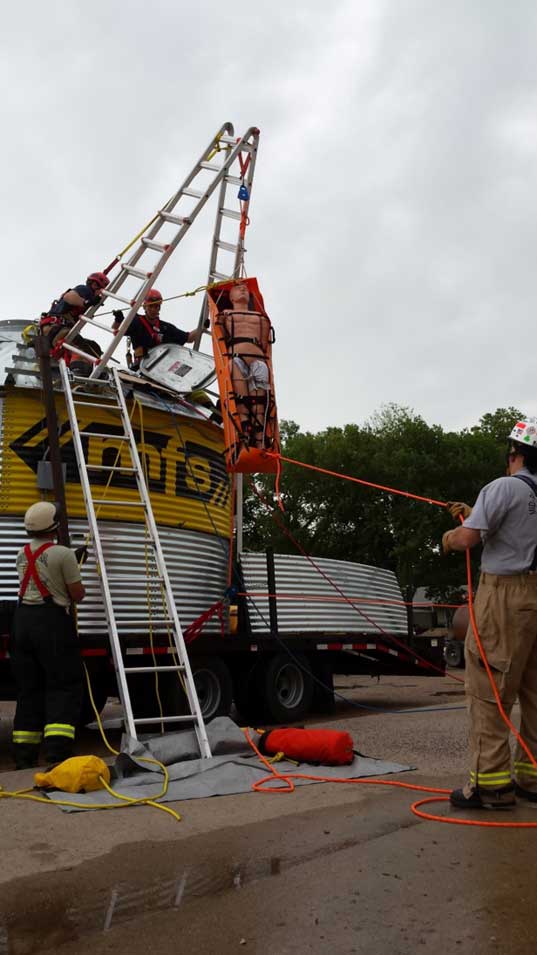
Training and the necessary tools are a major factor in grain bin recues. If you do not have the training, equipment, and personnel to complete the job and have grain bins in your response area, then you are doing your community and resident a disservice. These incidents are low frequency and high risk. The knowledge and training of the first on scene firefighters will determine to a great extent how the rescue goes.
Tim Zehnder began his fire service career in 1990 as a member of the Truman (MN) Volunteer Fire and Rescue Department, where he has held every position from firefighter to chief. He received his emergency medical technician and NFPA 1001 training that same year. Zehnder has a degree in fire science from Lake Superior College. He also worked for two years as an engine foreman for the United States Forest Service at the Payette National Forest in Idaho, was a Minnesota State fire instructor for 18 years, and was the fire rescue training program manager at a Minnesota state training college for seven years. He retired from the Truman Fire & Ambulance service in April 2013 after more than 21 years of service. Zehnder then accepted the position of director of fire science at the Mid Plains Community College. He is also a paid-on-call firefighter with the McCook City (NE) Fire Department and the president of the Nebraska Society of Fire Service Instructors as well as the city of McCook’s 2015 Firefighter of the Year. Zehnder co-authored the “Grain Bin Rescue” video for Fire Engineering Books and Videos and presents programs on firefighter survival and safety, rapid intervention team, rural tactics, grain bin rescue, and more. He is also an International Society of Fire Service Instructors 1403, Live Fire Instructor, and travels the country delivering the program.

